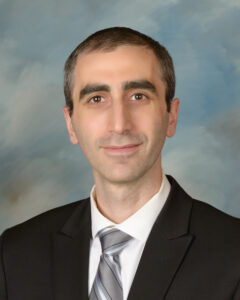One in eight women in the U.S. will be diagnosed with breast cancer in their lifetime, making it likely to know someone affected by the disease.
Unfortunately, breast cancer incidence rates have been rising by 0.6% each year, according to the American Cancer Society. This year, the National Breast Cancer Foundation projects that 310,720 women and 2,800 men will be diagnosed with invasive breast cancer.
Even with these stark statistics, there is hope. When detected early, the five-year survival rate becomes an encouraging 99%. Some women experience early symptoms, but others do not—underscoring the importance of early detection through regular screenings.
Methods for early detection include monthly breast self-exams and regular clinical breast exams and mammograms. Mammograms help women detect cancer before a lump can be felt.
How do you know if it is a malignant tumor or a benign cyst? “Lumpy breasts are common, and most breast lumps are benign,” explained Dr. Vardan Papoian. “Cysts can come and go, depending on hormones. A cyst may feel like a lump, but it is usually a fluid-filled sac, not a mass of cells. Regardless, patients should have a doctor investigate lumps to rule out any concerns.”
Here are some of the symptoms to pay attention to:
- Nipple tenderness or a lump in the breast or underarm
- Changes in skin texture or an enlargement of pores, red, scaly or swollen (some liken this to an orange peel’s texture)
- Any unexplained change in the size or shape of the breast
- Unexplained swelling of the breast, especially if on one side
- Size changes, particularly if one side decreases
- Recent asymmetry (unequal or lack of sameness) of the breasts.
- A nipple that is turned slightly inward or inverted
Many of the risk factors associated with breast cancer can’t be controlled, including a family history of the disease and an increased risk that comes with age. However, there are some lifestyle choices you can make to help reduce your risk of developing breast cancer:
- Maintaining a healthy weight
- Staying physically active
- Avoiding alcohol
- Quitting tobacco use and avoiding exposure to tobacco smoke
- Avoiding excessive exposure to radiation
Don’t wait. Early detection saves lives. Schedule your mammogram today by calling Barstow Community Hospital One Call Scheduling at 760-255-4224.

Dr. Vardan Papoian is an independent member of Barstow Community Hospital’s Medical Staff
Sources:
National Breast Cancer Foundation, Inc.
American Cancer Society
